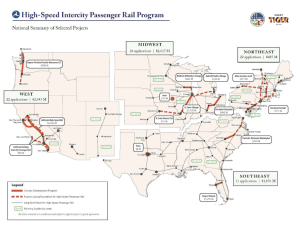
The Obama administration back in January promised $8 billion in funding for cities and states to build high-speed, intercity rail projects.
This week, the Department of Transporation issued its specifications for the manufacture of new fast trains, namely double-decker coach, dining, baggage, and business class passenger rail cars that can travel between 79 MPH and up to 220 MPH.
Bi-level rail cars not typical in the US today, would accommodate more passengers, and hopefully alleviate congested roads and some resulting air pollution.
According to the American Association of State Highway & Transportation Officials (AASHTO) 95 percent of passenger travel in America is made by car, motorcycle and truck on our highways now.
Expanding highway capacity and overhauling busted roads with more durable and sustainable materials can prevent some traffic jams. But even highway professionals advocate building efficient, intercity, high speed trains and upgrading our freight rail systems.
Wireless companies like Groundlink and D-Link could win business rigging new high speed trains with internet service and related equipment.
Cities that recently won government funding for their high speed passenger rail projects include: Cleveland, Columbus and Cincinnati, Ohio, and Battle Creek, Michigan among others along the Detroit to Chicago route.
Feds promised the biggest piece of the budget in their national high speed rail transit program earlier this year to large-scale efforts in Florida and California that would connect Tampa and Orlando with 168 MPH trains, and Los Angeles and San Francisco with trains running up to 200 MPH.
Image via:Federal Railroad Administration